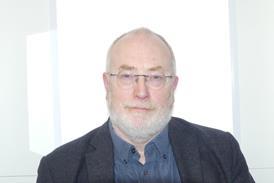Nuance Communications appointed an independent research firm to examine clinical documentation challenges faced by NHS trusts in England, revealing the staff spend a third of their time on documentation
Nuance Communications commissioned an independent research consultancy to study the challenges of clinical documentation for NHS trusts in England. Almost 1,000 doctors, nurses and allied health professionals participated in the survey which ran between April and July 2022. The results of this survey have now been published in a report, revealing healthcare professionals are spending an average of 13.5 hours per week generating clinical documentation, a 25 per cent increase in the last seven years.
Clinicians are spending more time on documentation
Sponsored by
Healthcare professionals across all roles spend a significant proportion of their working week adding to, or creating, clinical documentation. An average of 13.5 hours per week —which is more than a third of the average clinician’s working hours, and 25 per cent more time than in 2015. Consultant nurses reported the highest number of hours spent on documentation per week, at 16.5 hours, and consultant doctors followed close behind at 15.1 hours.
Another area of concern, revealed by this study, is that much of this documentation is completed outside of working hours. Healthcare professionals across all roles report spending an average of 3.2 hours per week generating clinical documentation in their personal time—with consultant doctors reporting an average of 4.7 hours.
As overload and burnout levels continue to rise among clinician teams, it’s crucial that healthcare leaders search for ways to reduce documentation tasks from eating into their clinician’s personal time. A separate survey conducted by Nuance in 2020 found that 85 per cent of NHS healthcare professionals think the burden of clinical documentation is a significant contributor to burnout.
Putting down the pen and paper
One positive development is that documentation modalities have dramatically changed in the past seven years. In this year’s report, half the number of clinicians reported using pen and paper compared to those surveyed in 2015.
This switch has also brought a reduction in narrative content in clinical documentation. As more clinicians shift to using an electronic patient record to complete their documentation, notes are becoming more structured.
Inaccuracies are still causing challenges
Surprisingly, despite the switch from pen and paper to digital platforms, the survey did not reveal a significant increase in documentation accuracy. In fact, in a quarter (25 per cent) of instances, clinicians report the information they need isn’t available in the records at the right time — only a 2 per cent fall in the past seven years.
Like the 2015 study, the number one cause for this challenge is incomplete information in the clinical notes/records. In contrast, issues relating to diagnostics (such as waiting for diagnostics results or uncertainty in what diagnostics have been requested) appear to have significantly worsened over the last seven years.
These challenges add to the time clinicians need to spend wrestling with documentation throughout the day. In this year’s survey, despite an increase in digitisation, clinicians’ time spent searching for information remained very high, rising from 55 minutes to 62 minutes per day.
Every hour a clinician spends on creating or locating clinical documentation is one less hour spent on patient care. To enable them to get back to doing what they trained for, we must find new ways to help ease the growing burden of administrative responsibilities.
A more efficient way to tackle clinical documentation
Nearly all the challenges studied in the report highlight just how much time documentation takes up in clinicians’ working week — whether it’s creating it, amending incomplete documentation, or searching for information.
As workloads continue to grow and healthcare organisations are forced to operate with more limited resources, we’re at risk of putting one of our most precious institutions under even more avoidable pressure. In response, many healthcare leaders are exploring how speech-enabling their EPR can help their clinicians tackle documentation more efficiently and free up time in the working day.
Learn more about Nuance Dragon Medical One – an advanced conversational AI workflow assistant and clinical documentation companion.
View study infographic: The value of speech-enabling an EPR with Dragon Medical One.


























